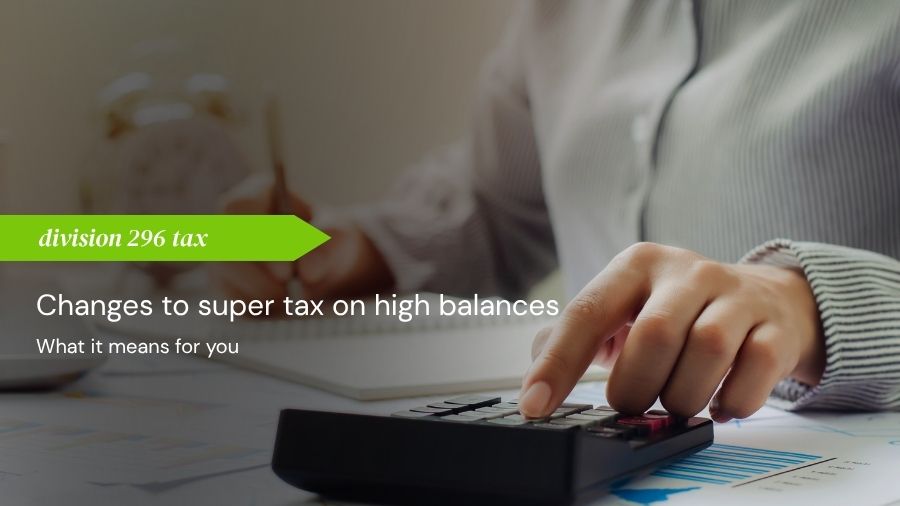Division 296 Tax: Changes to super tax on high balances – What it means for you Posted on October 20, 2025

The Government’s reforms to superannuation taxation (via the proposed Better Targeted Superannuation Concessions Bill) introduce a major shift in how investment earnings in super will be taxed for individuals with large balances. Key components (as at October 2025) include:
- A tax on earnings within superannuation where the member’s Total Super Balance (TSB) exceeds $3 million – rather than simply a cap on the balance itself.
- The former design proposed taxing unrealised gains (i.e. market movements, whether or not assets were sold). That controversial element has been removed – under the new announcement, only realised investment earnings will be taxed.
- A two-tier structure has been introduced:
- Earnings associated with the portion of the TSB between $3 million and $10 million will be taxed at an effective rate of 30% (i.e., the standard 15% plus 15% extra) in the accumulation phase.
- Earnings on the portion of the TSB above $10 million will be taxed at an effective rate of 40% (15% + 25% extra).
- Both thresholds – $3 million and $10 million – will be indexed to inflation (CPI).
- The implementation is delayed: the tax will apply to earnings from the 2026-27 financial year (with the balance test at 30 June 2027).
In simple terms: for individuals with very large super balances, investment returns in their super will face substantially higher taxation.
Why is the Government doing this?
The reform is part of a broader policy ambition to:
- Ensure the generous tax concessions enjoyed by superannuation are better targeted, i.e., to focus the largest benefits on those who most need them, and reduce the scale of concessions for ultra-high-balance members.
- Improve the sustainability of the superannuation system and reduce the future budget cost of super tax concessions.
- Introduce fairness signals: those who have accumulated very large super balances will now face a higher tax burden on investment earnings than most other members.
Who will be affected?
- The changes apply to members whose total superannuation balance (across all funds) at 30 June 2027 is $3 million or more. Then, investment earnings from 1 July 2026 will be subject to the new rules.
- Current estimates suggest this affects only a small percentage of Australians—recent commentary cited under 0.5% of members currently have balances above $3 million.
- However, because of investment growth, contributions, and compounding over years, more members could cross thresholds in future—especially high-income earners, those with larger lump sum contributions, or SMSF members with high-growth portfolios.
Note: Because the thresholds are indexed, some of the bracket-creep risk is mitigated, but high-balance members should assume they may face this tax.
What the numbers look like
Putting it together:
| Balance tier | Effective tax on earnings* |
|---|---|
| Up to $3 million | Standard tax treatment (typically 15% accumulation) |
| From $3 m to $10 m | Effective ~30% tax on earnings for that portion |
| Above $10 m | Effective ~40% tax on earnings for that portion |
* For the accumulation phase; other rules may apply in pension phase, and trustees/fund rules matter.
Example: If your TSB is $4 million at 30 June 2027, and your super earns $200,000 in the 2027-28 year, then the portion of your earnings attributable to the $1 million over $3m might be taxed at the higher rate (assuming the legislation flows as announced).
What should I do?
At this state, no action is required. We will continue to provide updated information as it becomes available and will work to assess how these proposals may impact our clients.





